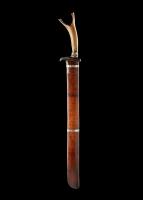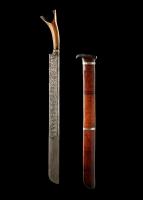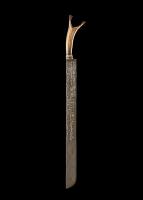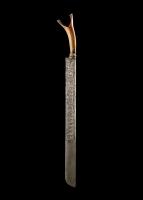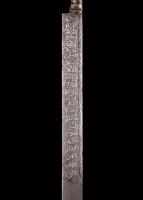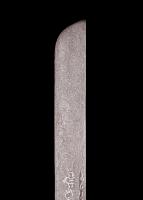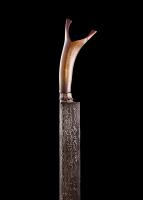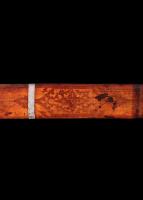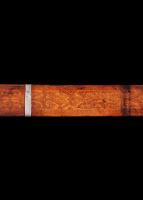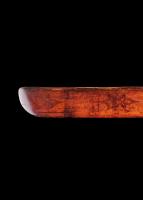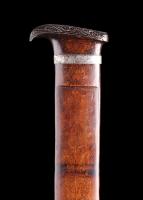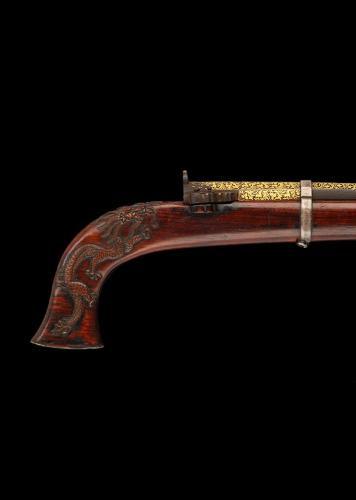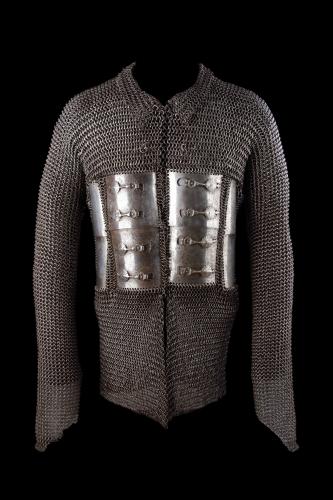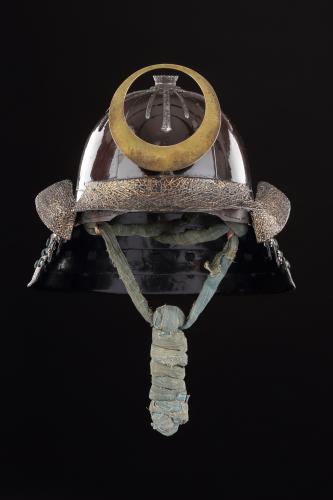
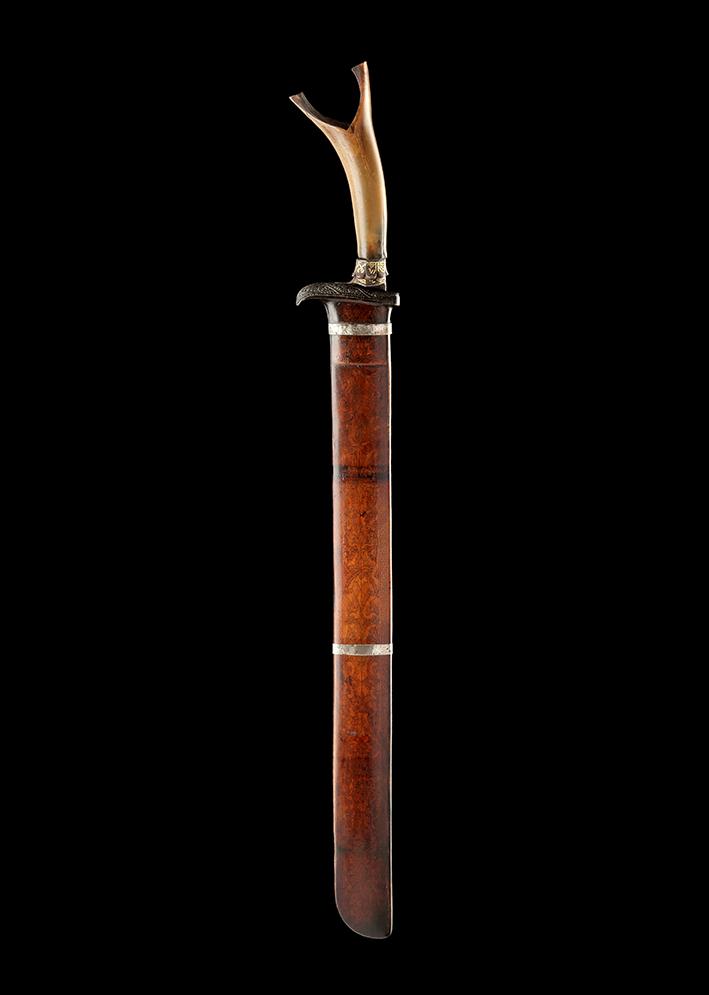
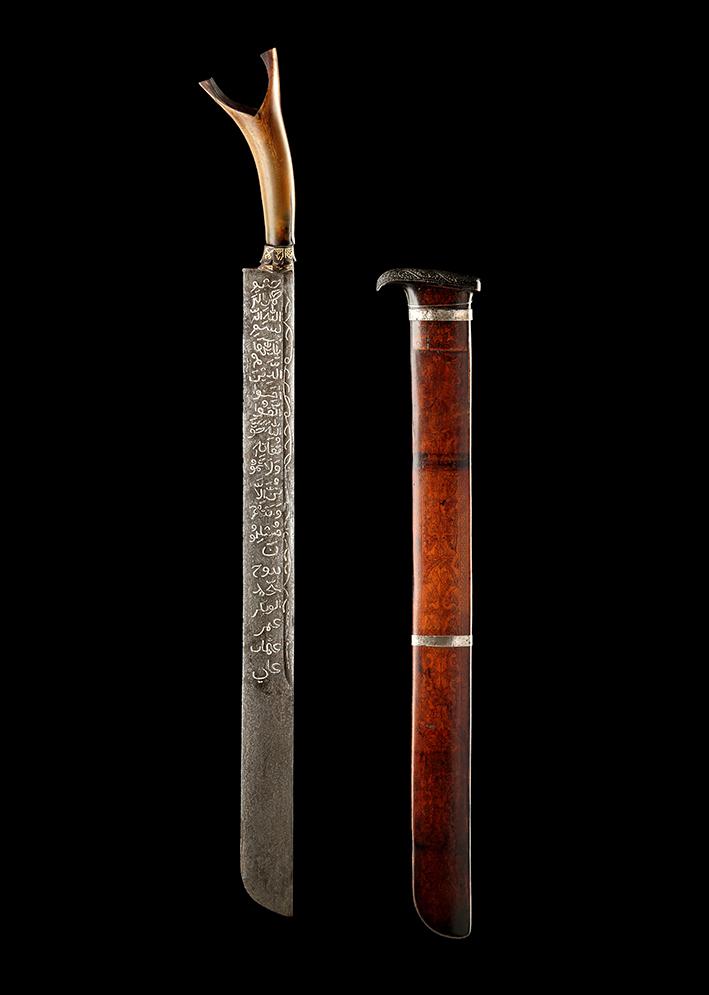
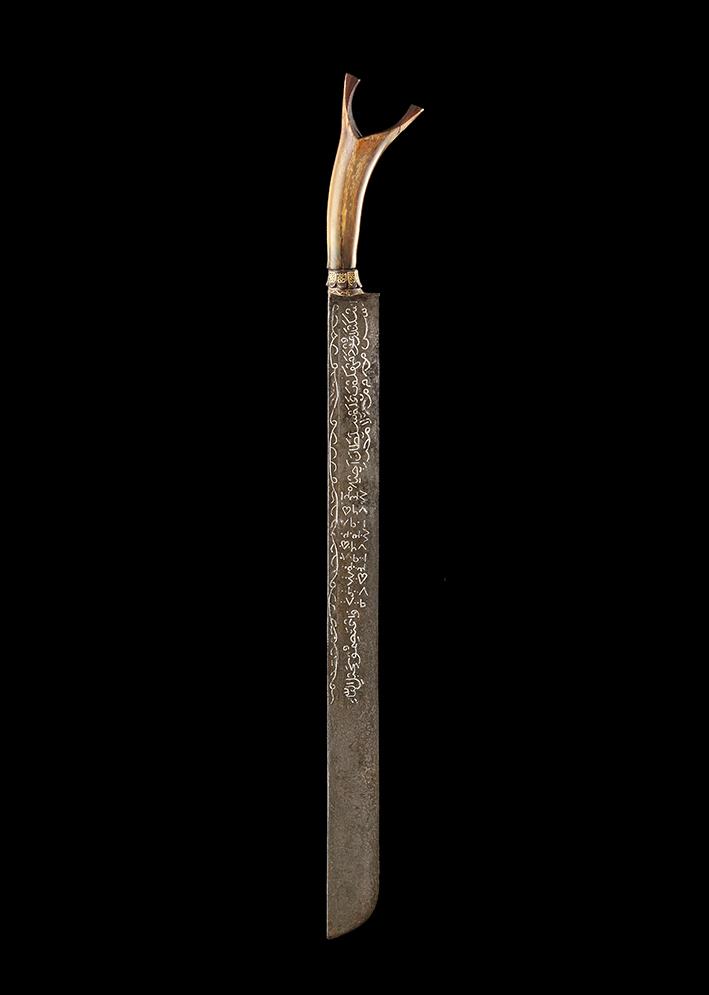
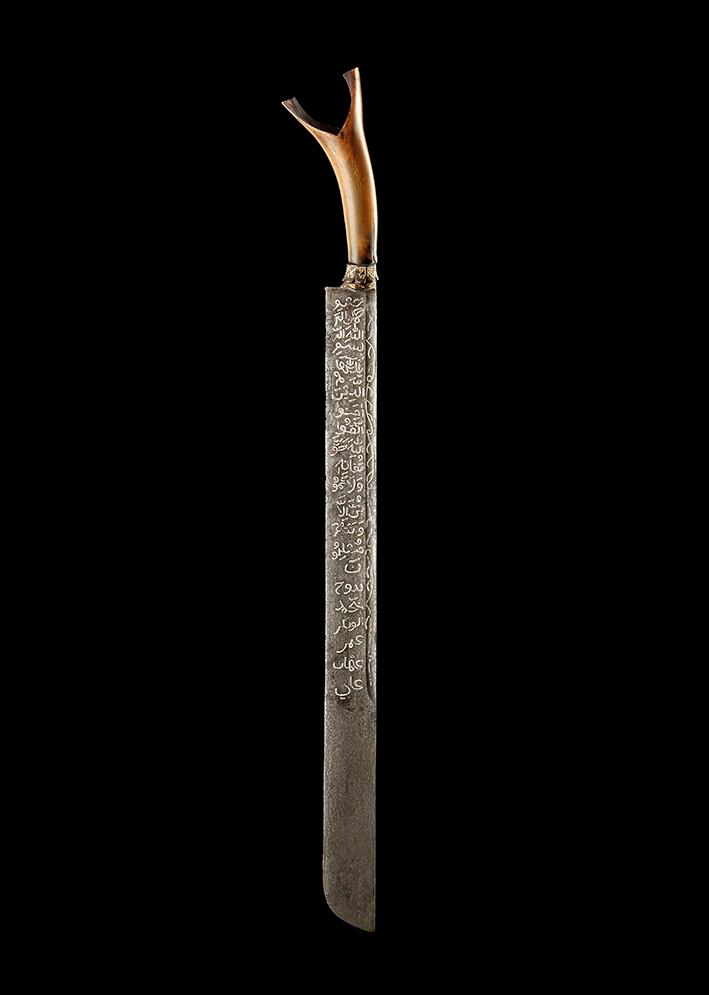
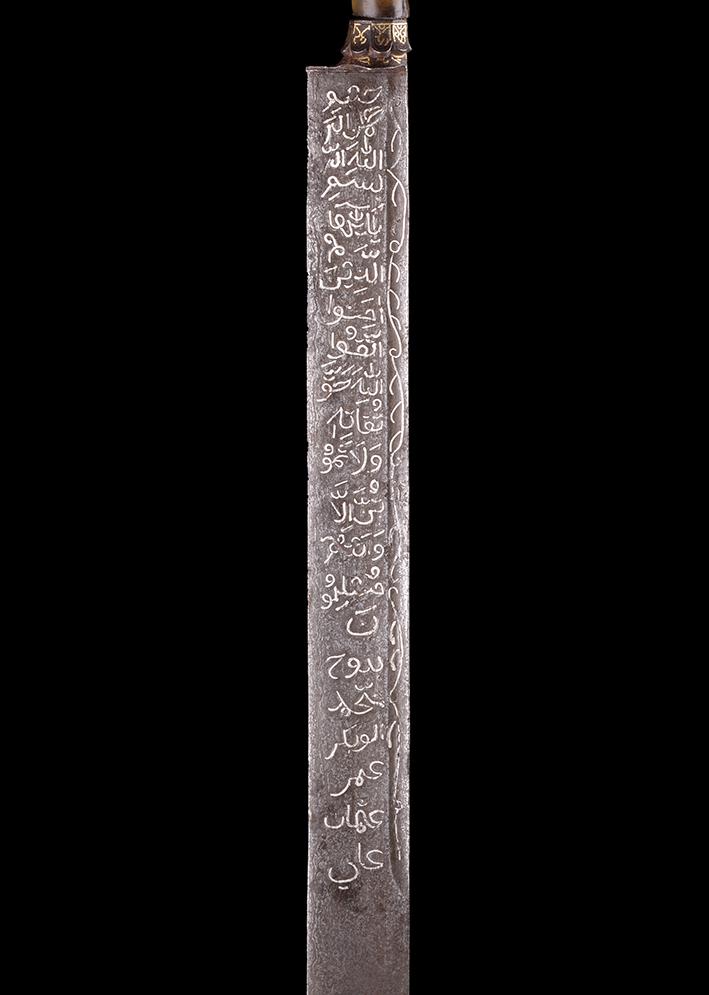
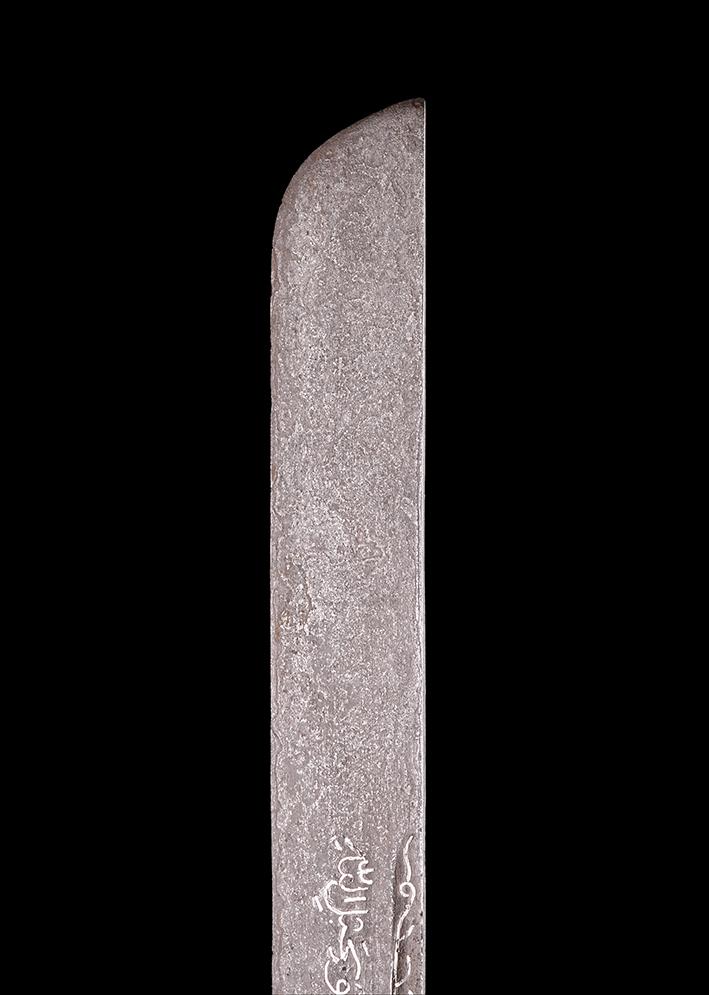
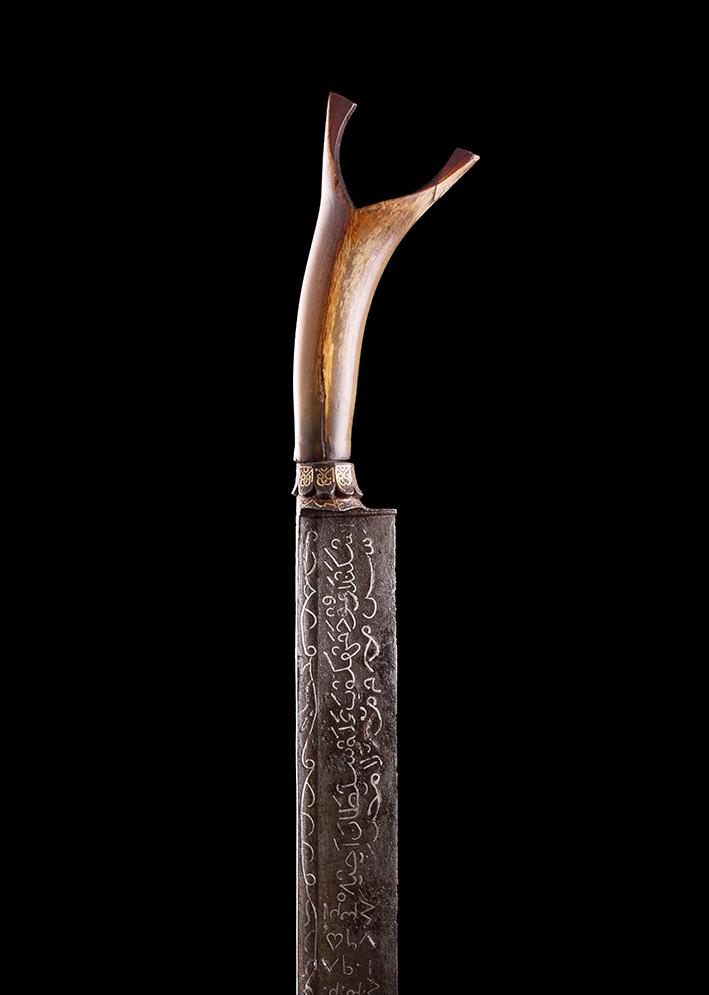
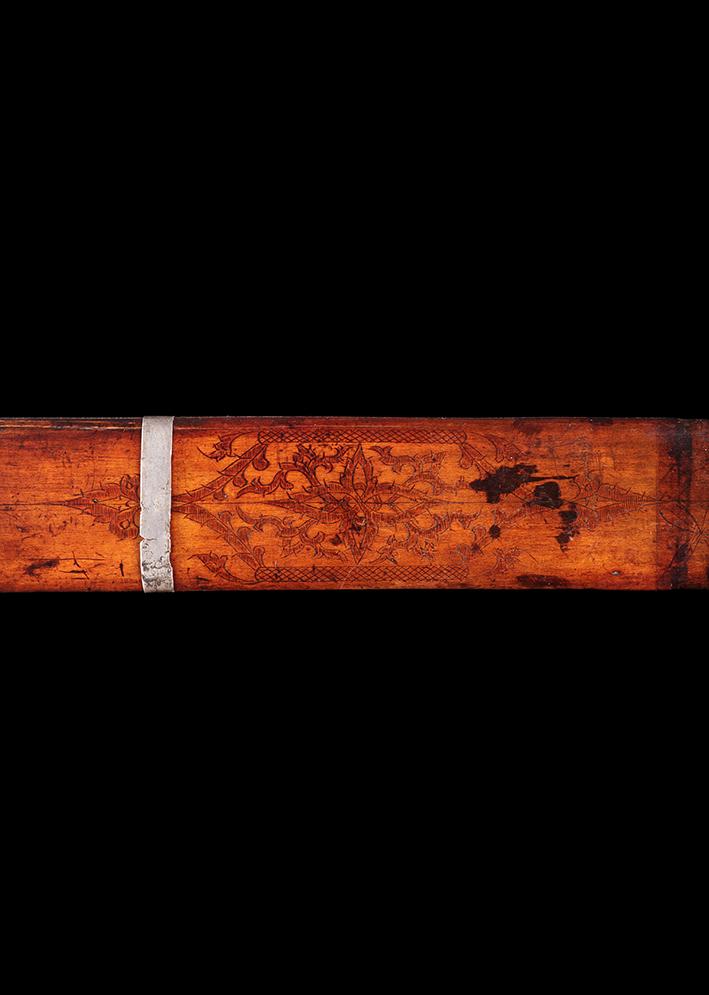
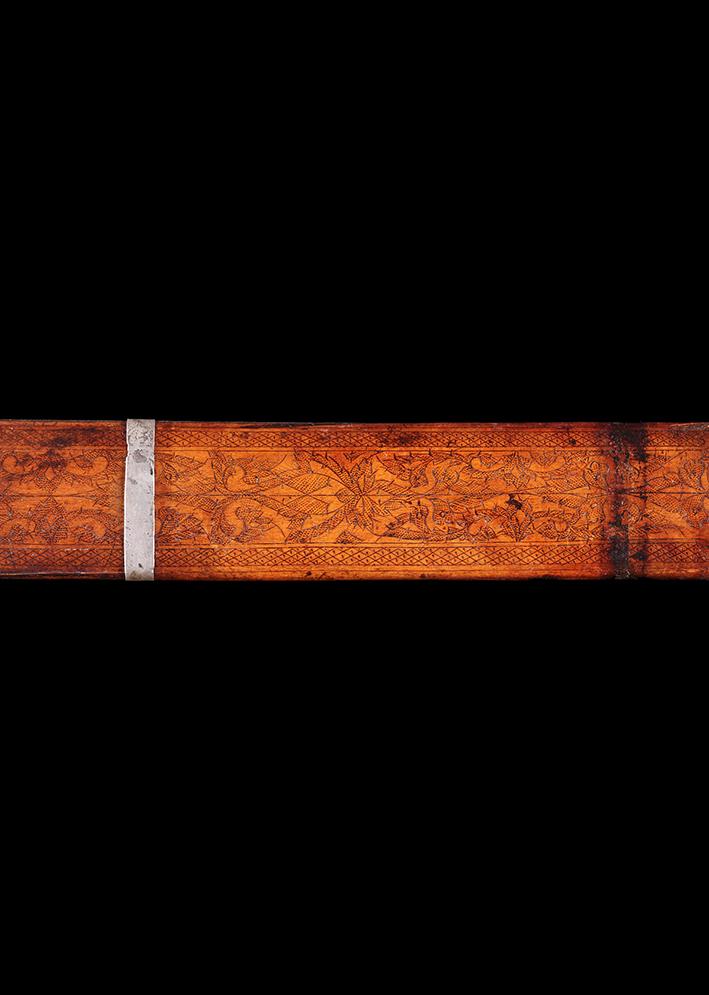
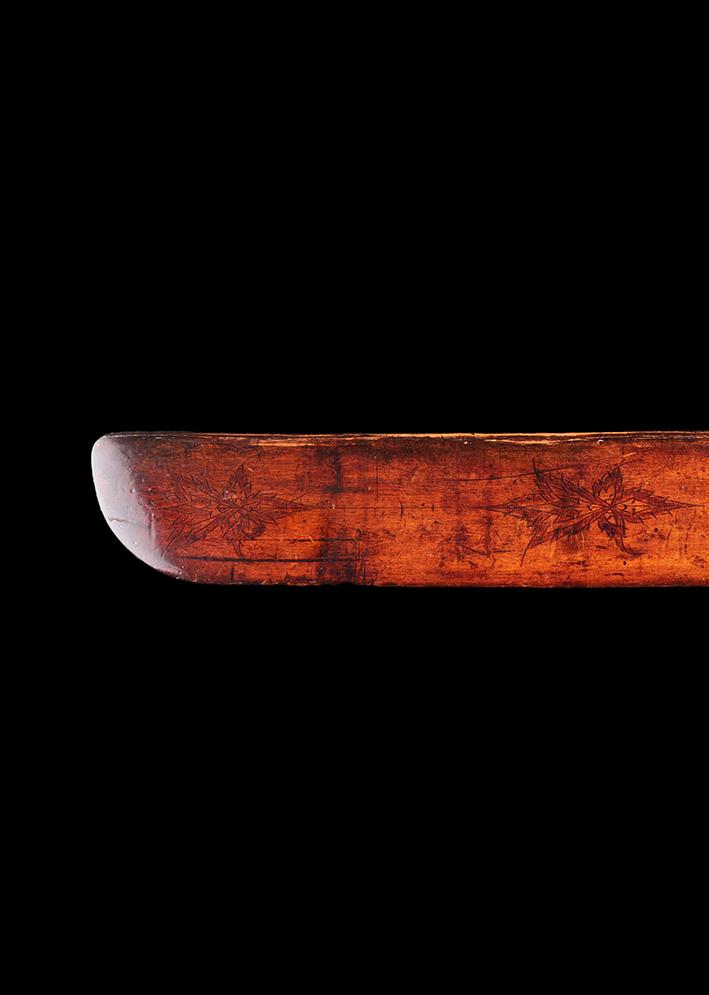
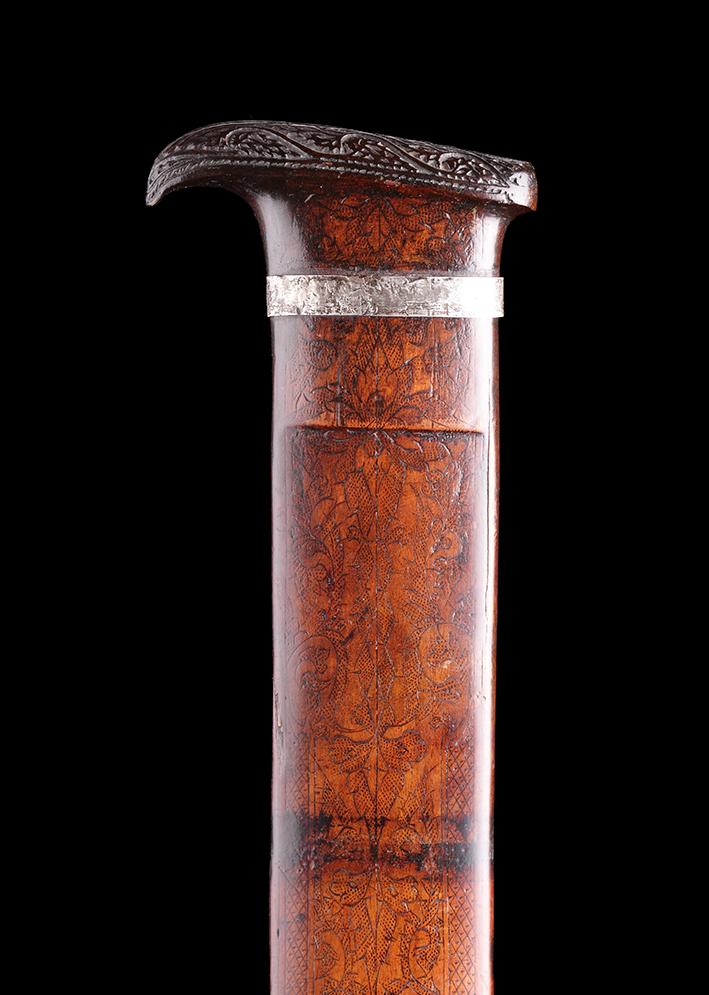
Price on application
This object is eligible for a Certificate of BADA Provenance
The BADA Standard
- Since 1918, BADA has been the leading association for the antiques and fine art trade
- Members are elected for their knowledge, integrity and quality of stock
- Our clients are protected by BADA’s code of conduct
- Our dealers’ membership is reviewed and renewed annually
- Bada.org is a non-profit site: clients deal directly with members and they pay no hidden fees
Sikin Panyang.
Place of Origin: Northern Sumatra, Indonesia (Aceh Province).
Date: Late 19th Century.
Overall: 692mm (27 ½ Inches).
Blade: 520mm (20 ½ Inches).
The present sword or sikin panyang is an interesting variant of the type of straight, single edge cutlass or klewang sword originating from the Indonesian Archipelago (Nusantara).
As a typical example of the most popular fighting weapon of the Acehnese people, this particular piece is thought to have been made in the province of Aceh, Northern Sumatra, likely during the early years of the Aceh War against the colonial Dutch, prior to 1879, where many sikin were produced[1].
The wooden scabbard, or sarung, is reinforced with two metal bands. Worn at the waist, it is of uniform width from end to end and has been polished and darkened by the years. It displays an intricate design of carvings with floral and leaved vine tendrils engraved on both sides of its length, inspired by the Aceh vegetation. The throat is well-preserved and shows exceptional low-relief chasing. The forked hulu or handle, made of horn (probably buffalo), leads to a ferrule with gilt overlay decoration that merges into the first two inches of the sword’s spine. These forked hilts are also named toempang beunteuëng due to their transverse protrusions[2].
The most remarkable aspect of the laminated blade or wilah is its inlaid honorific inscription. Starting from the ricasso, it mentions the Sultan of Aceh Iskandar Muda (early 16thC, d.17thC) and is encoded with apotropaic properties: as he was known as Aceh's most powerful historic ruler, Sultan Iskandar Muda would have been an appropriate figure to invoke during war times. Additionally, it features both Quranic writings and esoteric blessings (basmalah/bismalah).
Transliteration reads as follows :
Side A
Bismillah al-rahman al-rahim (reading upwards from line 4)
yā ayyuhā
alladhīna
āmanū
ittaqū
l-lāha ḥaqqa
tuqātihi
wa-lā
tamūtunna ilā
wa antummu
muslimū-
na
[Qur’an 3:102 : “You who believe, be mindful of God, as is His due, and make sure you devote yourselves to Him, to your dying moment.”[3]].
budūḥ
[This is a talismanic word formed from the abjad equivalents of the four corner cells of a 3 × 3 magic square: 2, 6, 4, 8 (2 = ba, 6 = waw, 4 = dal, 8 = ḥa]
Muhammad
Abu Bakr
Umar
Uthman
Ali
Side B
(Reading from the hilt)
Iskandar Muda Mahkota Alam Sultan Aceh
S m-h m l-a m-ḥ?-r
[Without further clues, these isolated letters are impossible to interpret: they may have talismanic significance, or perhaps are intended to indicate ownership.]
(Rotated 90 degrees, reading from the tip of the sword down)
900 800
700 600
500 400
300 200
100 90 10
80 70 50
40 30 20
10 9 8
7 6 5
4 3 2 1
(Rotated back to previous orientation, reading along the length of the blade, Qur’an 3:103, continuing from the other side)
wa-iʿtaṣimū bi-ḥabli l-lāhi
[“Hold fast to God’s rope.”[4]]
Provenance:
Private collection, United Kingdom.
Notes:
[1] Personal communication with Dr Mulaika Hijjas (SOAS University of London) – with thanks for her help contextualizing and transliterating the sword’s inscription.
[2] See Farouk Yahya, Magic and Divination in Malay Illustrated Manuscripts, Brill, 2015.
See also Steel and Magic : Edged Weapons of the Malay Archipelago, Deutsches Klingenmuseum Solingen, Sixt Wetzler, 2020.
[3] Abdel Haleem trans. The Qur‘an. Oxford: OUP, 2008. p. 41.
[4] Abdel Haleem trans., ibid., p. 42.
The BADA Standard
- Since 1918, BADA has been the leading association for the antiques and fine art trade
- Members are elected for their knowledge, integrity and quality of stock
- Our clients are protected by BADA’s code of conduct
- Our dealers’ membership is reviewed and renewed annually
- Bada.org is a non-profit site: clients deal directly with members and they pay no hidden fees


